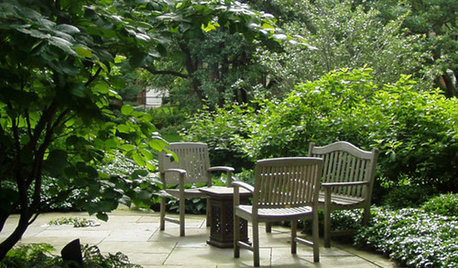ID Help: Brown patch? Dead lawn? Dormant grass?
User
10 years ago
Related Stories

GARDENING GUIDES5 Great Grasses for a New Lawn
Learn about maintenance, wear tolerance, ideal climate and more for these top turf choices to pick the right one for you
Full Story
GARDENING GUIDESSmall Gem Lawns: More Impact From Less Grass
Instead of letting the lawn sprawl, make it a shapely design element in your yard. You’ll reap benefits both practical and aesthetic
Full Story
GARDENING GUIDESHow to Fix Bare and Yellow Lawn Spots
Restore your turf’s good looks by reseeding unsightly patches
Full Story
EARTH DAYThe Case for Losing the Traditional Lawn
Work less, help the environment and foster connections by just saying no to typical turf
Full Story
MOST POPULARMeet a Lawn Alternative That Works Wonders
Carex can replace turfgrass in any spot, is low maintenance and adjusts easily. Add its good looks and you’ve got a ground cover winner
Full Story
GRASSESHow to Rock a Lawn
Weekend Project: The key to healthy grass begins with the soil. If turf works for you, here’s how to fix it and keep it looking its best
Full Story
LANDSCAPE DESIGN7 Low-Maintenance Lawn Alternatives
Turf isn't the only ground cover in town. Get a lush no-grass lawn with clover, moss and other easy-care plants
Full Story
LANDSCAPE DESIGNIs It Time to Consider Fake Grass?
With more realistic-looking options than ever, synthetic turf can be a boon. Find the benefits and an installation how-to here
Full Story
GARDENING AND LANDSCAPINGYour Yard: Are You Ready to Lose the Lawn?
Save time and water with good-looking alternatives to turf grass
Full Story
PETS6 Ways to Help Your Dog and Landscape Play Nicely Together
Keep your prized plantings intact and your dog happy too, with this wisdom from an expert gardener and dog guardian
Full Story






hogan_nj
dchall_san_antonio
Related Professionals
Comstock Park Landscape Architects & Landscape Designers · Severn Landscape Architects & Landscape Designers · Wareham Landscape Architects & Landscape Designers · Aurora Landscape Contractors · Canyon Lake Landscape Contractors · Ellicott City Landscape Contractors · Fort Atkinson Landscape Contractors · Lyndhurst Landscape Contractors · Plainview Landscape Contractors · Santa Ana Landscape Contractors · Vineyard Landscape Contractors · Greenfield Landscape Contractors · Forney Swimming Pool Builders · Santa Clarita Swimming Pool Builders · Visalia Swimming Pool BuildersUserOriginal Author
UserOriginal Author
uscjusto
UserOriginal Author
uscjusto
UserOriginal Author
UserOriginal Author
UserOriginal Author
dchall_san_antonio
UserOriginal Author
Erika Freer
UserOriginal Author
Erika Freer
UserOriginal Author
dchall_san_antonio
Erika Freer
UserOriginal Author